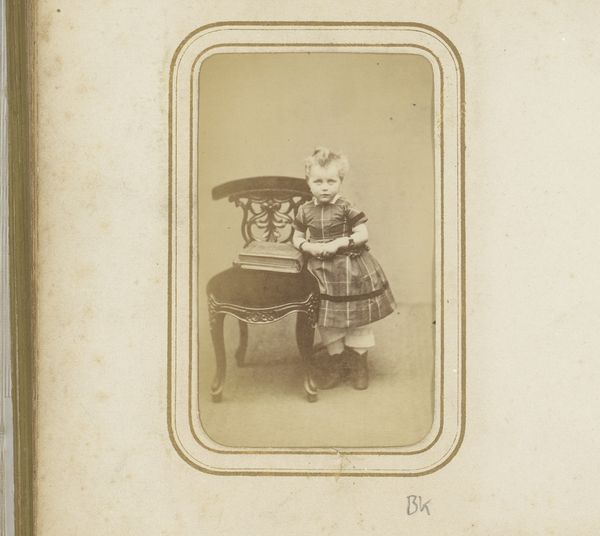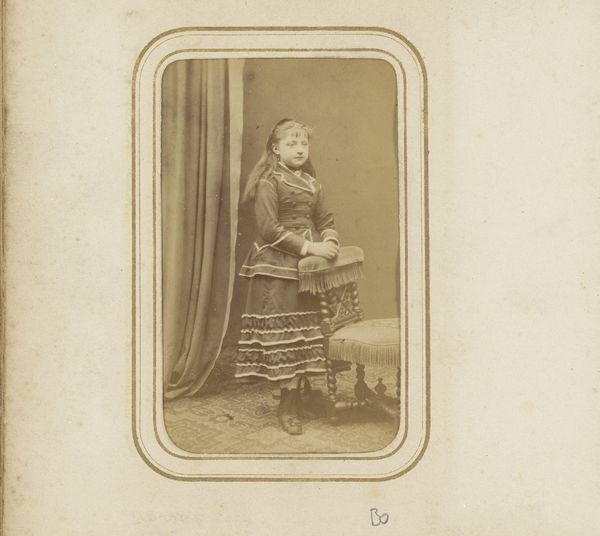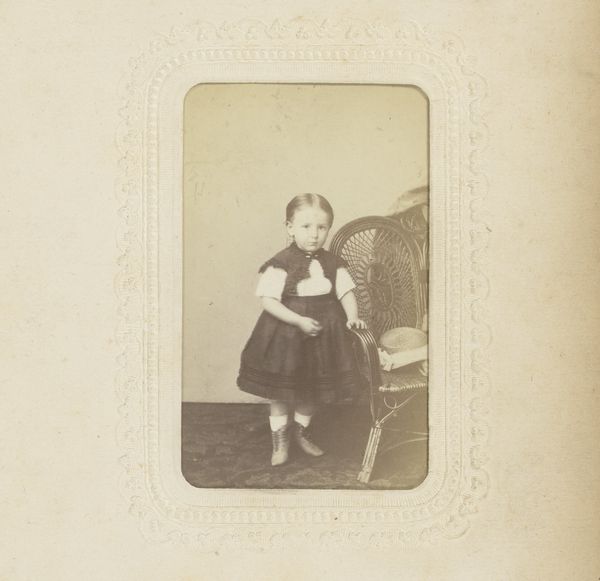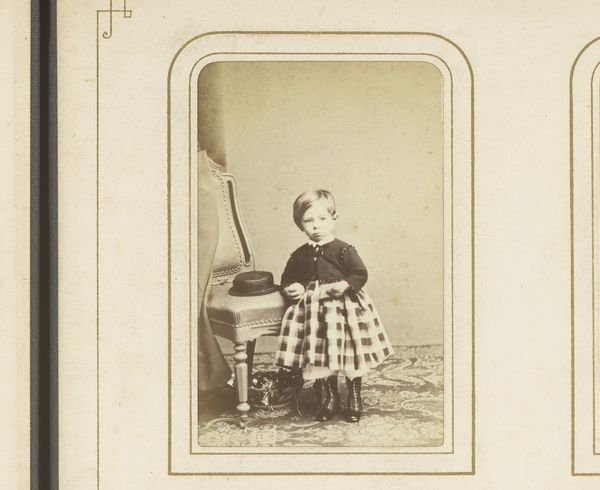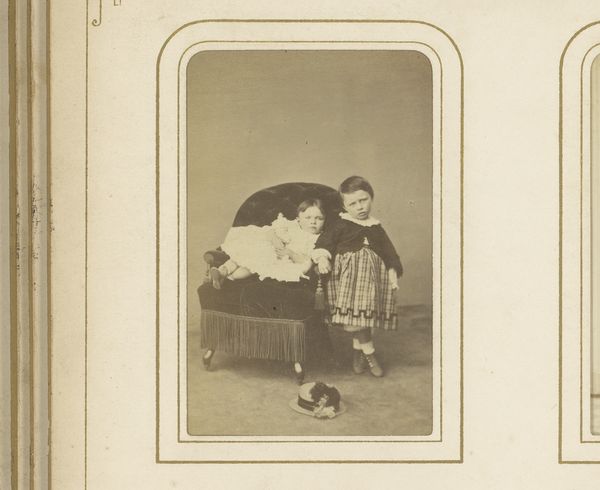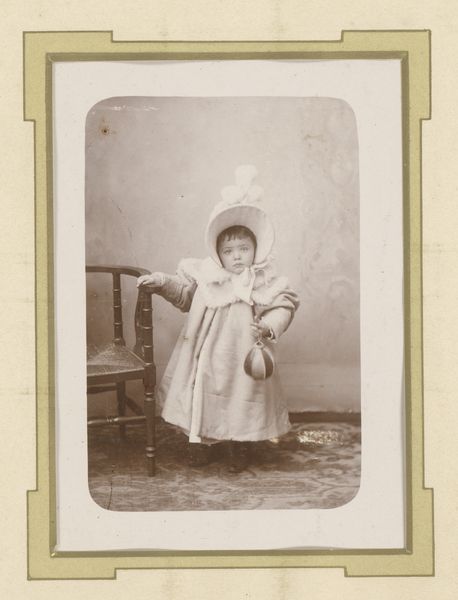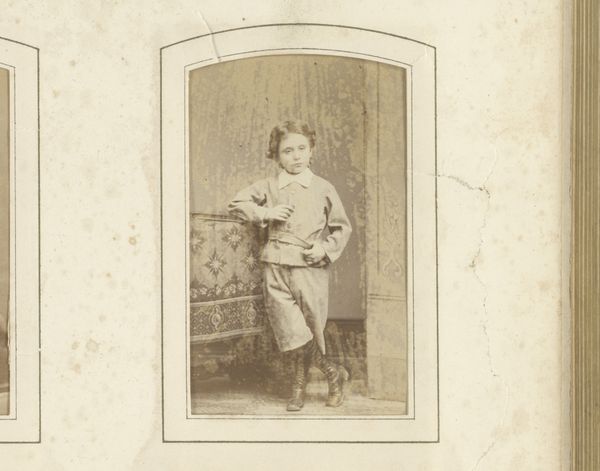
photography, albumen-print
#
portrait
#
photography
#
orientalism
#
albumen-print
Dimensions: height 85 mm, height 52 mm
Copyright: Rijks Museum: Open Domain
Editor: Here we have an albumen print titled 'Portret van iemand met dwerggroei', or 'Portrait of someone with dwarfism,' created sometime between 1850 and 1880 by Maujean & Dubois et Cie. It feels quite staged and formal. I’m curious, what's your interpretation of this piece, especially considering its historical context? Curator: This photograph presents a complex intersection of portraiture, disability, and colonial perspectives. The subject, presumably of Asian descent given the ‘orientalism’ tag, is posed formally, likely to satisfy European or Western consumers' desires. I would look into the relationship between ethnographic photography and scientific documentation prevalent during that period. The photograph, rather than a purely objective record, contributes to a larger socio-political framework of ‘othering.’ Why do you think the photographer chose to present the subject in this particular way? Editor: I suppose to create a sense of exoticism? Was there a market for these types of images? Curator: Precisely! It was fashionable in Europe and America to collect photographs representing different cultures and ‘types’ of people. It satisfied curiosity, reinforced stereotypes, and justified colonial power dynamics. This image needs to be considered not just as a depiction of an individual but as a commodity produced and consumed within specific historical and power structures. What do you make of the way the individual has been positioned relative to that ornate chair? Editor: Now that you mention it, the chair seems too big for the person, almost accentuating the... disparity. I hadn't really considered that. Curator: And that's the point! Understanding these historical forces allows us to see beyond the immediate image and understand the politics inherent within the very act of representation. This kind of analysis can help us understand photography's contribution to how disability and other cultures are portrayed today. Editor: That is such a broader context than I initially considered! I’ll certainly view photography, especially historical works, with a more critical lens. Thanks!
Comments
No comments
Be the first to comment and join the conversation on the ultimate creative platform.

